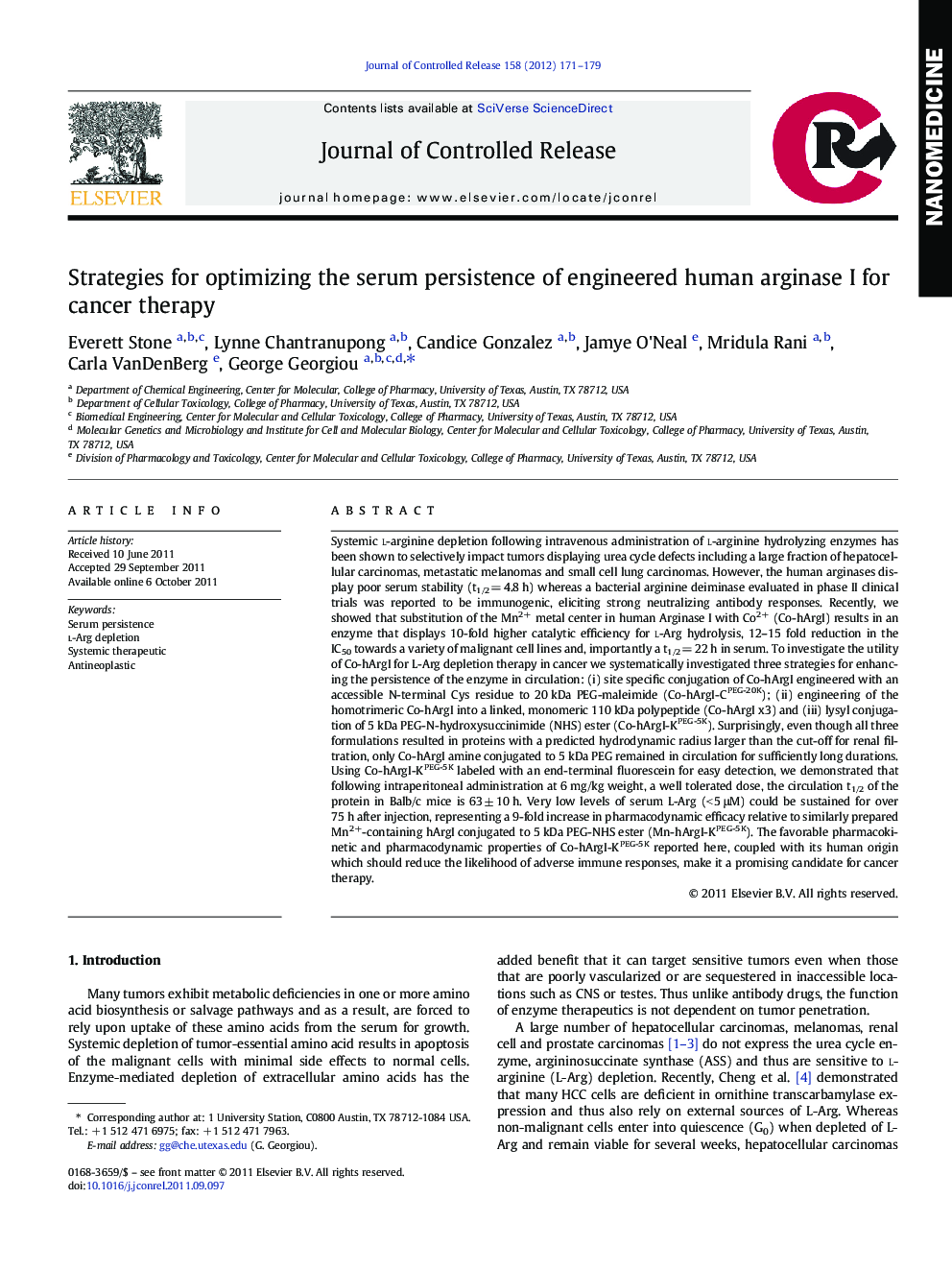| Article ID | Journal | Published Year | Pages | File Type |
|---|---|---|---|---|
| 1424793 | Journal of Controlled Release | 2012 | 9 Pages |
Systemic l-arginine depletion following intravenous administration of l-arginine hydrolyzing enzymes has been shown to selectively impact tumors displaying urea cycle defects including a large fraction of hepatocellular carcinomas, metastatic melanomas and small cell lung carcinomas. However, the human arginases display poor serum stability (t1/2 = 4.8 h) whereas a bacterial arginine deiminase evaluated in phase II clinical trials was reported to be immunogenic, eliciting strong neutralizing antibody responses. Recently, we showed that substitution of the Mn2+ metal center in human Arginase I with Co2+ (Co-hArgI) results in an enzyme that displays 10-fold higher catalytic efficiency for L-Arg hydrolysis, 12–15 fold reduction in the IC50 towards a variety of malignant cell lines and, importantly a t1/2 = 22 h in serum. To investigate the utility of Co-hArgI for L-Arg depletion therapy in cancer we systematically investigated three strategies for enhancing the persistence of the enzyme in circulation: (i) site specific conjugation of Co-hArgI engineered with an accessible N-terminal Cys residue to 20 kDa PEG-maleimide (Co-hArgI-CPEG-20K); (ii) engineering of the homotrimeric Co-hArgI into a linked, monomeric 110 kDa polypeptide (Co-hArgI x3) and (iii) lysyl conjugation of 5 kDa PEG-N-hydroxysuccinimide (NHS) ester (Co-hArgI-KPEG-5K). Surprisingly, even though all three formulations resulted in proteins with a predicted hydrodynamic radius larger than the cut-off for renal filtration, only Co-hArgI amine conjugated to 5 kDa PEG remained in circulation for sufficiently long durations. Using Co-hArgI-KPEG-5K labeled with an end-terminal fluorescein for easy detection, we demonstrated that following intraperitoneal administration at 6 mg/kg weight, a well tolerated dose, the circulation t1/2 of the protein in Balb/c mice is 63 ± 10 h. Very low levels of serum L-Arg (< 5 μM) could be sustained for over 75 h after injection, representing a 9-fold increase in pharmacodynamic efficacy relative to similarly prepared Mn2+-containing hArgI conjugated to 5 kDa PEG-NHS ester (Mn-hArgI-KPEG-5K). The favorable pharmacokinetic and pharmacodynamic properties of Co-hArgI-KPEG-5K reported here, coupled with its human origin which should reduce the likelihood of adverse immune responses, make it a promising candidate for cancer therapy.
Graphical abstractFigure optionsDownload full-size imageDownload high-quality image (151 K)Download as PowerPoint slide
